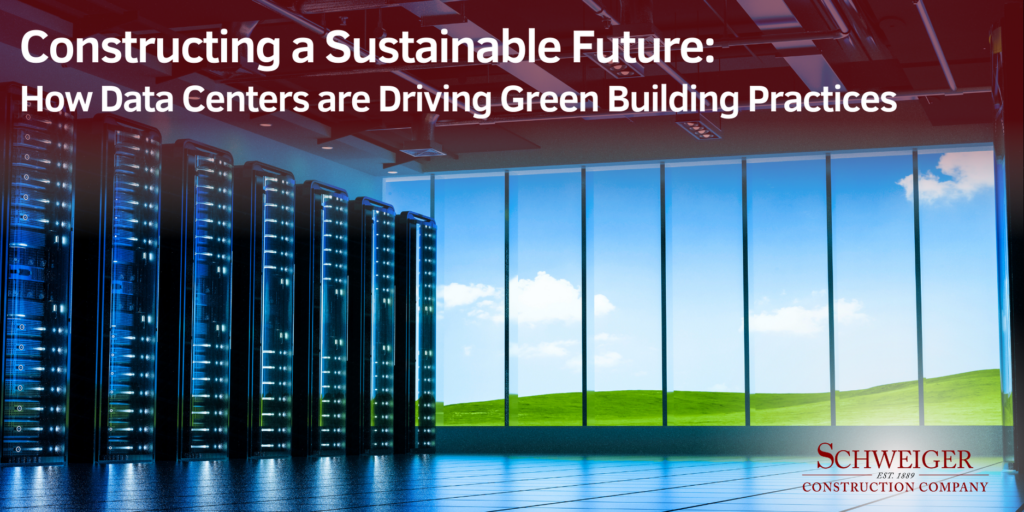As the world faces the challenges of climate change, the construction industry has a crucial role to play in driving sustainable practices. Companies like Schweiger Construction (SC) recognize the need to reduce the environmental impact of the constructed environment.
Data center growth and expansion today is largely being driven by AI models which require massive amounts of computing power to train and run. This computing power results in a significant amount of global greenhouse gas emissions, energy consumption, and waste generation. However, the data center industry is undergoing a transformative shift, with a growing emphasis on eco-friendly design and construction methods that are shaping the future of green building practices.
Benefits of Sustainable Data Center Construction
Sustainable construction practices offer a multitude of benefits, both for the environment and for the stakeholders involved. By embracing green building techniques, the industry can:
- Reduce Environmental Impact: Sustainable construction aims to minimize the carbon footprint of data centers, conserve natural resources, and promote the use of renewable and recycled materials. For example, cement is difficult to decarbonize. However, carbon-negative concrete can match the strength of standard concrete. Pozzola is made from powdered glass and can replace up to 50% of cement but with only 5% of the carbon footprint. This helps to combat climate change and preserve the planet for future generations.
- Lower Operating Costs: Energy-efficient design, water conservation, and the use of durable, low-maintenance materials can lead to significant cost savings for data center owners and operators over the long-term.
- Reduce Emissions: Sustainable building practices can cut greenhouse gas emissions from data centers, helping to mitigate climate change. This includes transitioning away from carbon-intensive backup power sources like diesel generators, which have historically been used to power data centers during outages. Alternative options include hydrogen-powered fuel cell generators in which lifecycle emissions are close to zero, HVO100, and renewable diesel from vegetable oils and fats.
- Increase Resilience: Buildings designed with sustainability in mind are better equipped to withstand the impacts of climate change, such as extreme weather events and natural disasters, reducing the risk of costly repairs.
- Create Community Engagement: Sustainable construction projects can involve local stakeholders, create green jobs, and contribute to the overall sustainability of the communities in which they’re located.
Schweiger’s Commitment to Sustainability
Schweiger has a long history of implementing eco-friendly solutions in its projects, showcasing the benefits of eco-friendly design, including:
- Energy Efficiency: Prioritizing the use of energy-efficient mechanical, electrical, and plumbing systems, thereby reducing the carbon footprint.
- Renewable Materials: Seek alternative methods of powering data centers with renewable energy sources such as solar, wind, hydroelectric, and nuclear power, significantly reducing their footprint.
- Heat Recycling: Data centers can be designed to recycle waste heat for district heating and other applications rather than releasing it into the atmosphere.
- Waste Reduction: Implement comprehensive waste management strategies and use more sustainable materials in construction.
The Road Ahead
As the data center industry continues to evolve, the importance of sustainability standards will only grow. By embracing eco-friendly design and construction practices, data centers will not only minimize their environmental impact but also deliver tangible benefits to their clients and the communities they serve.
The future of construction lies in sustainable solutions that balance the needs of people, the planet, and profitability. Schweiger remains committed to leading the way in this transformation.





